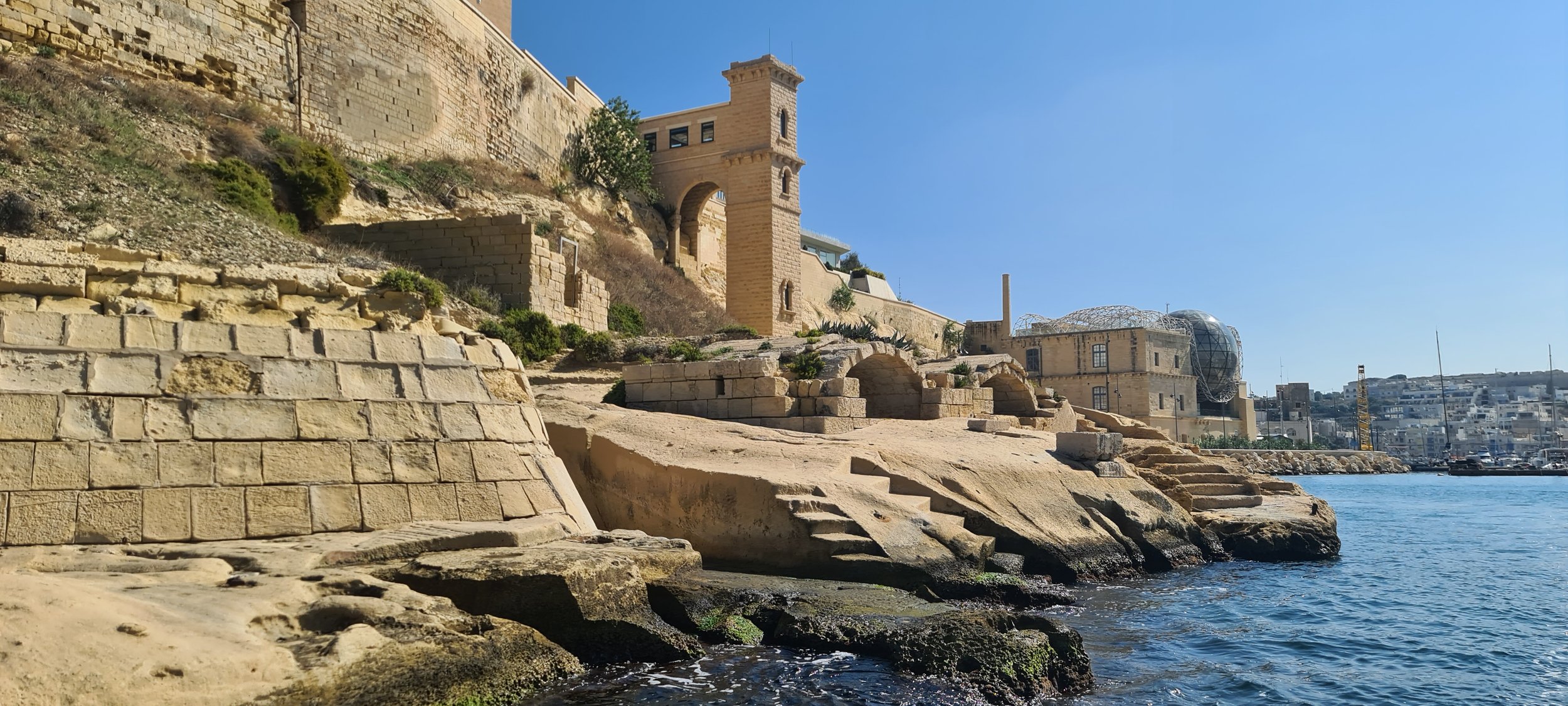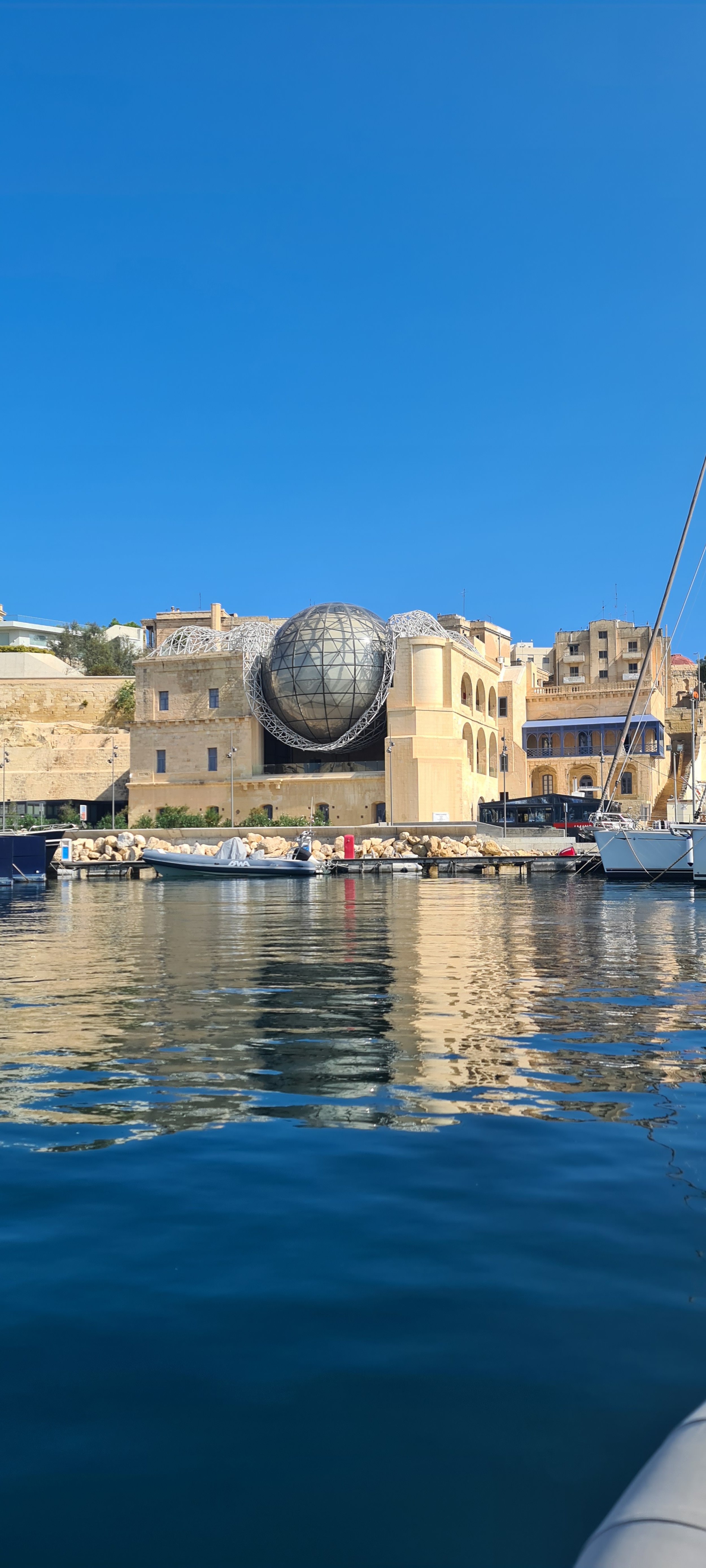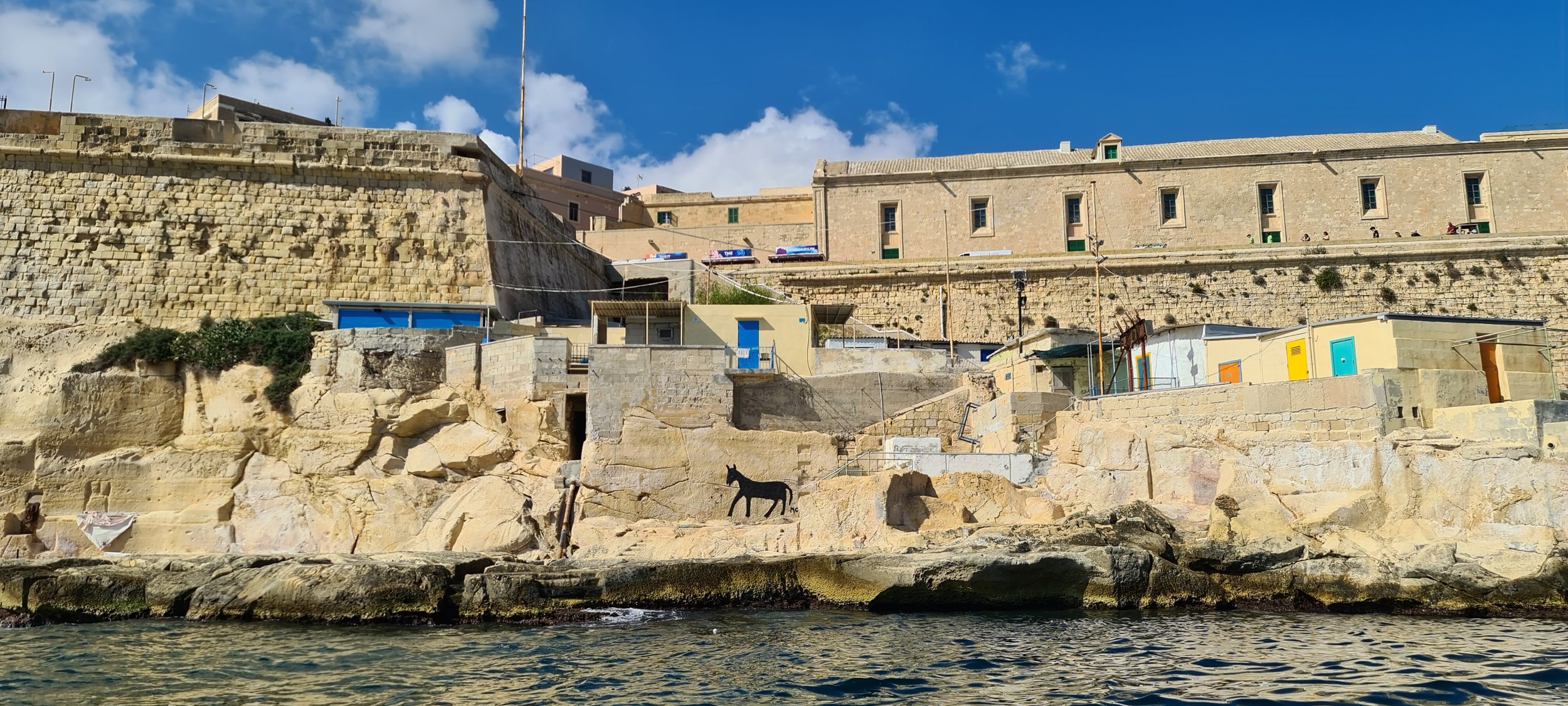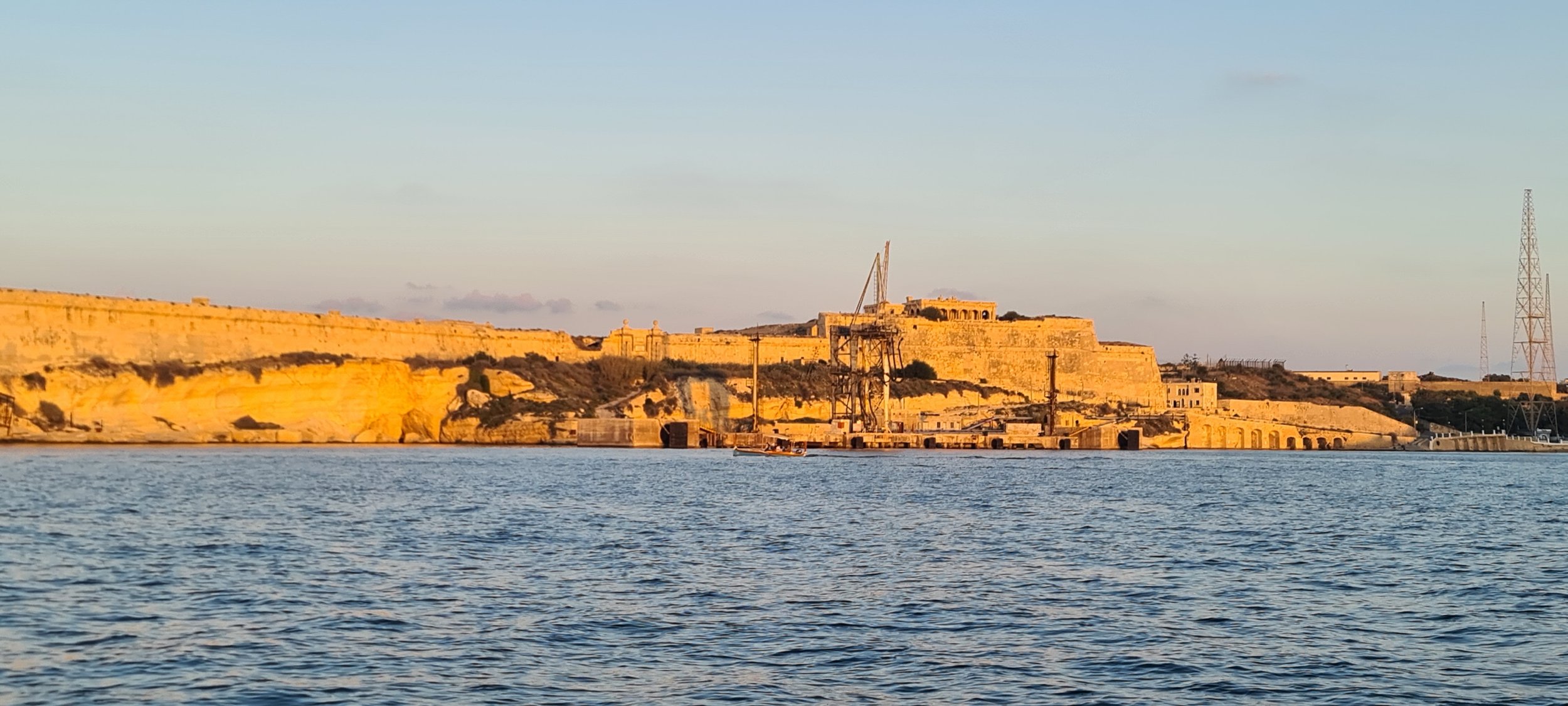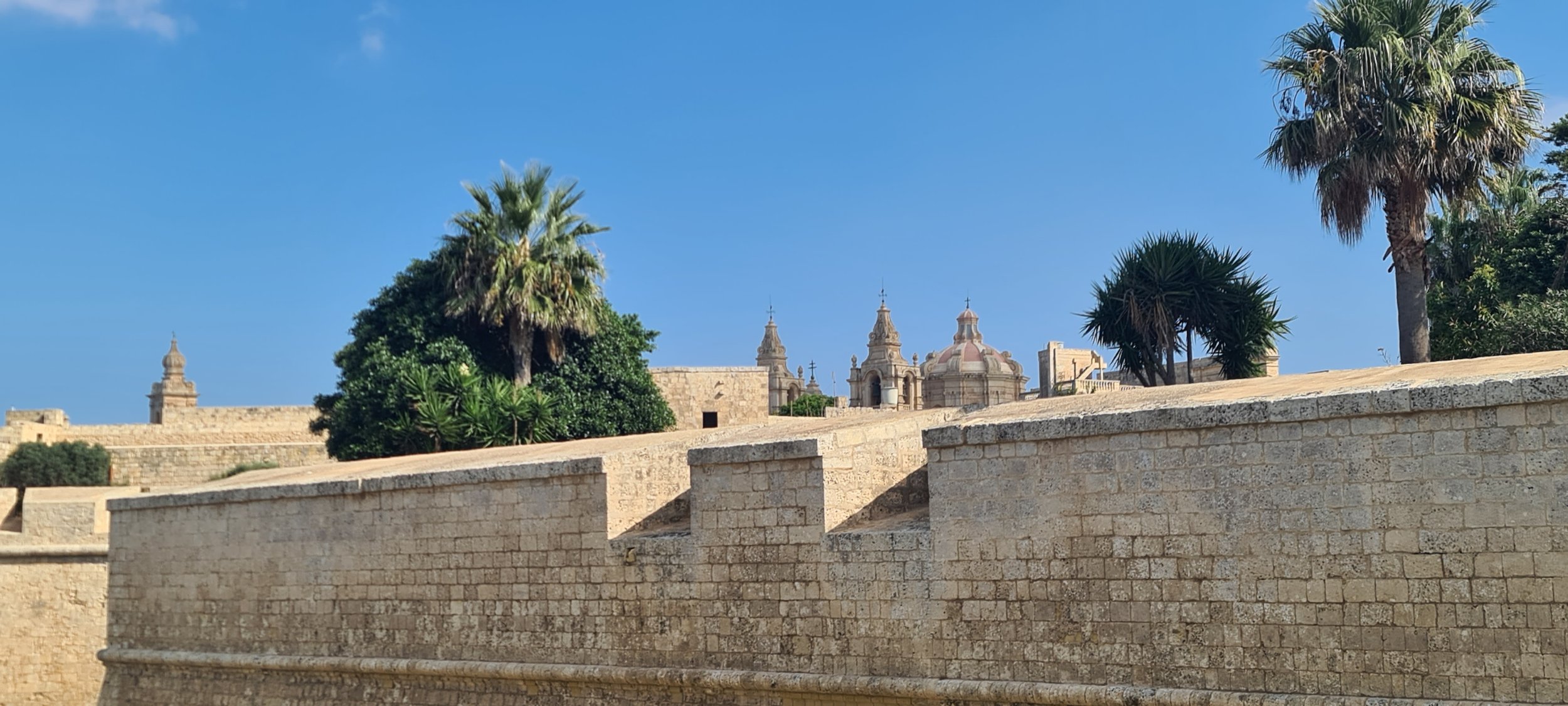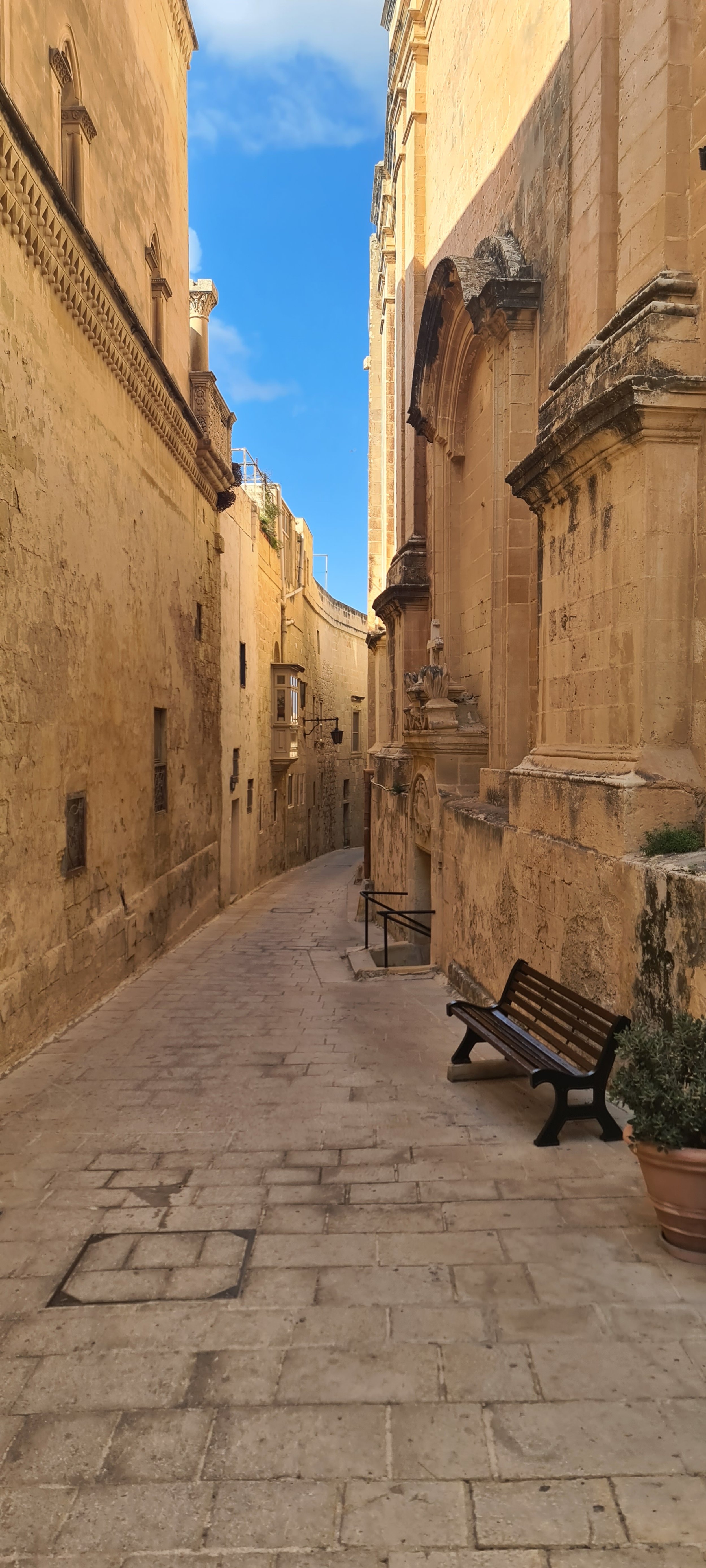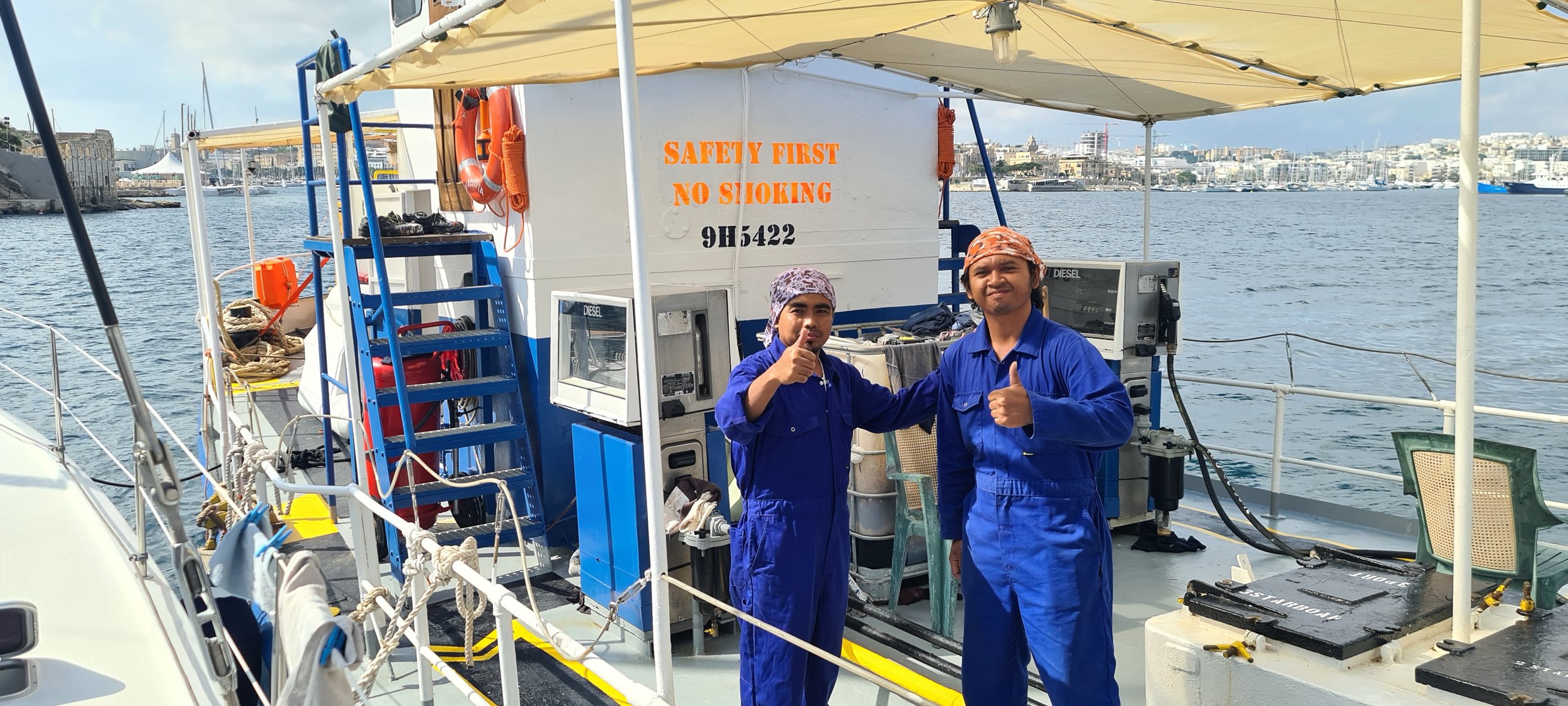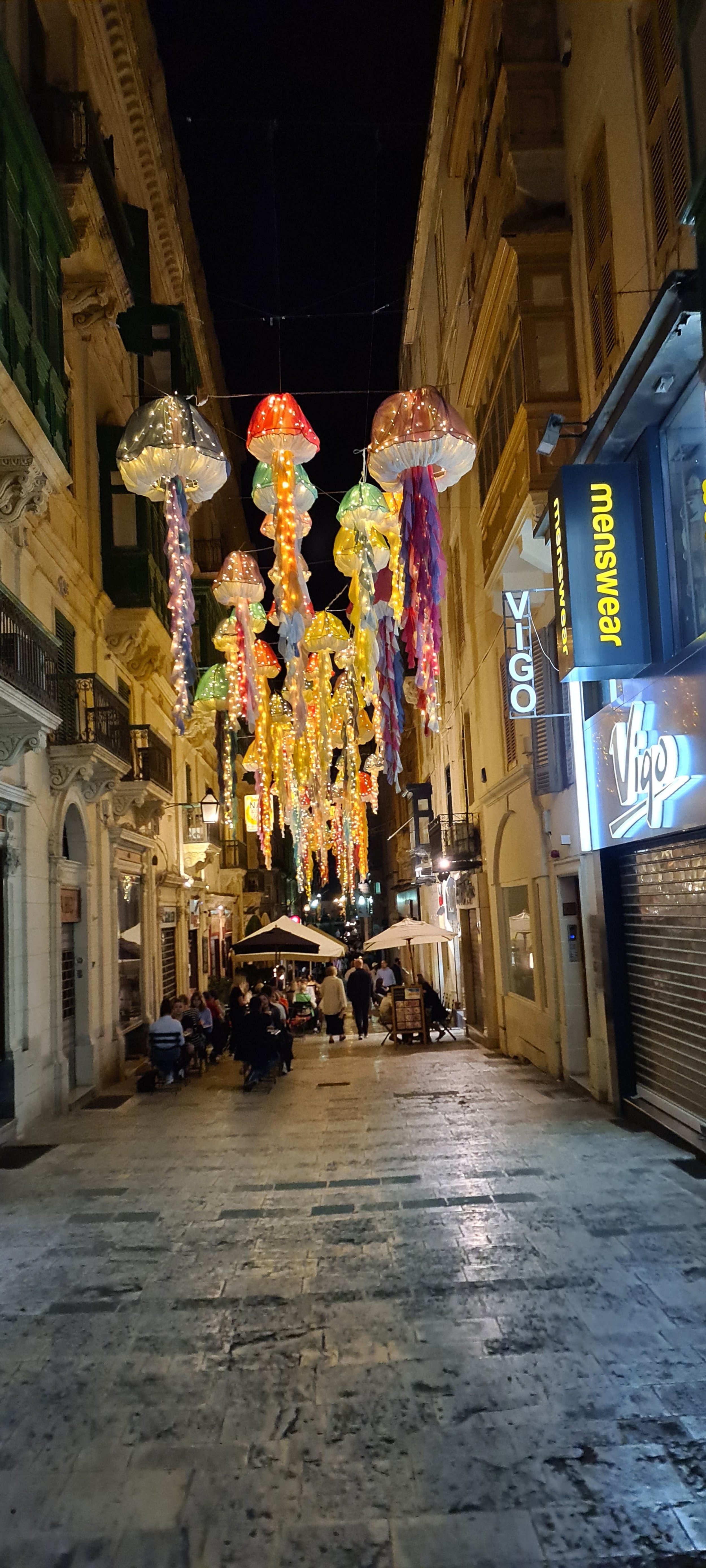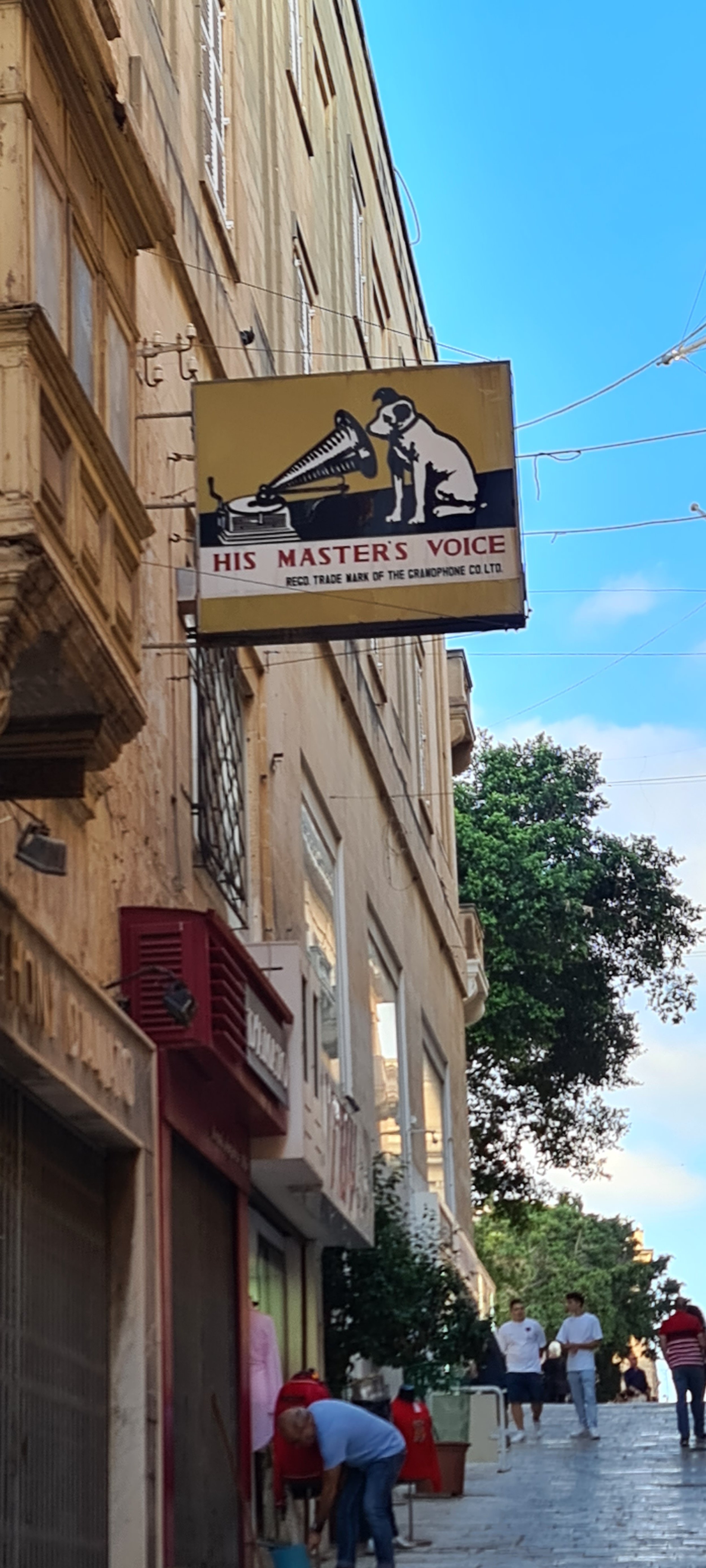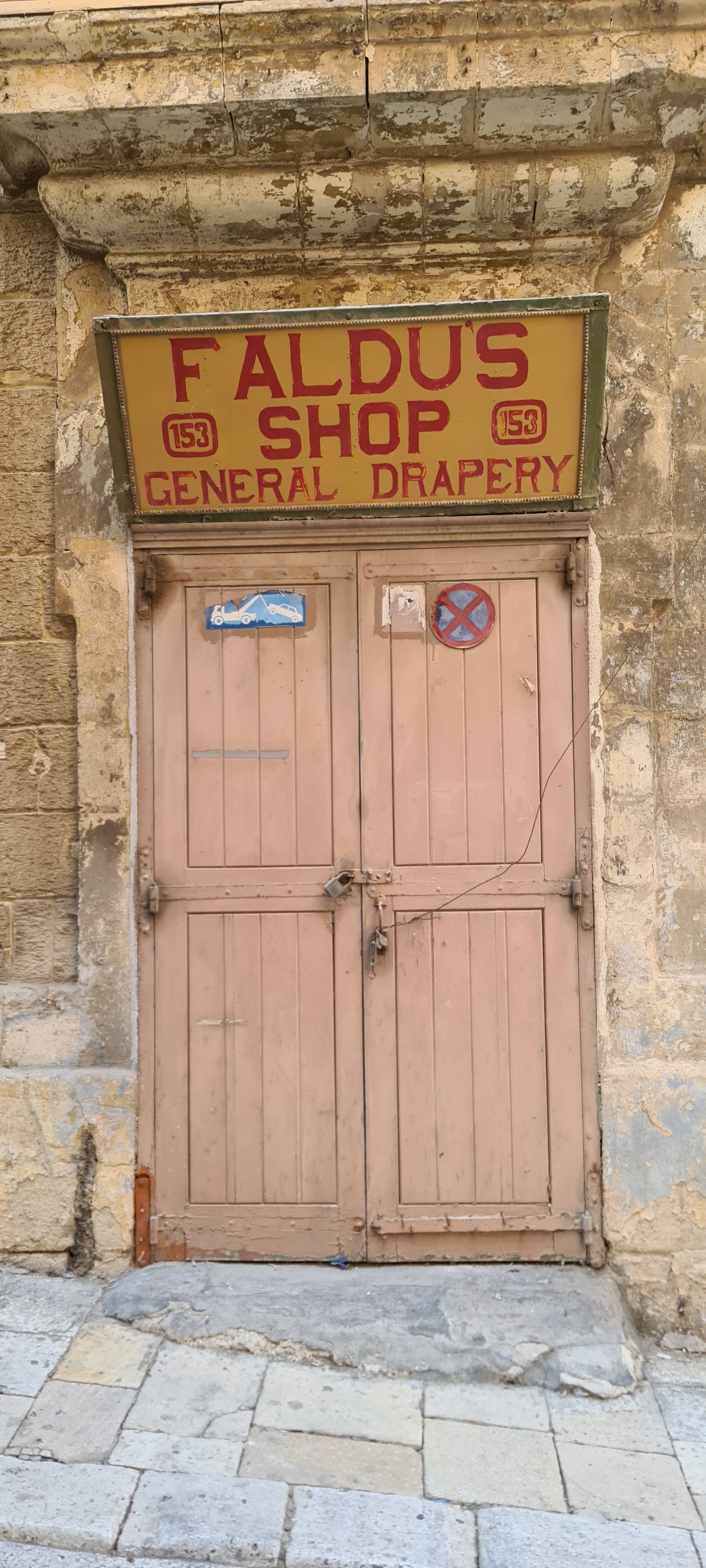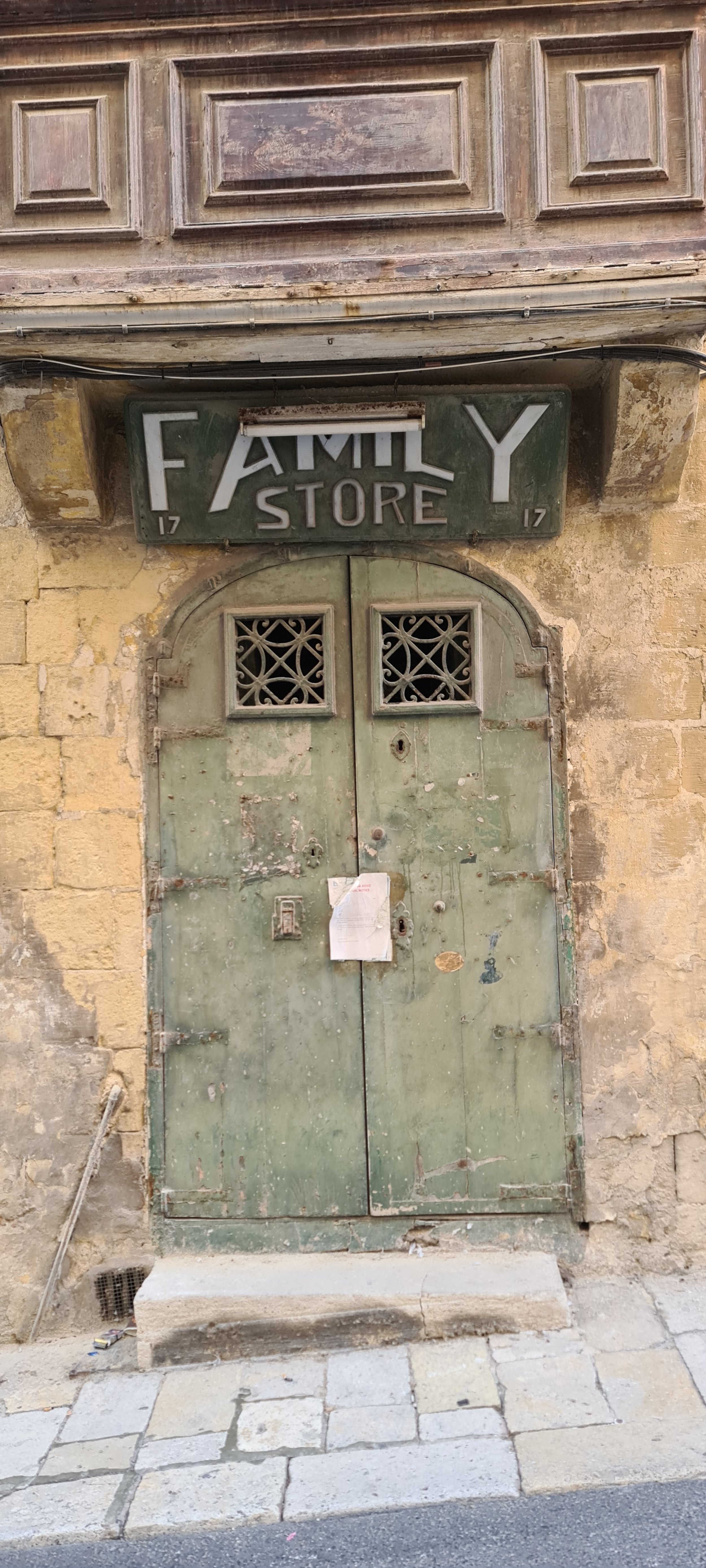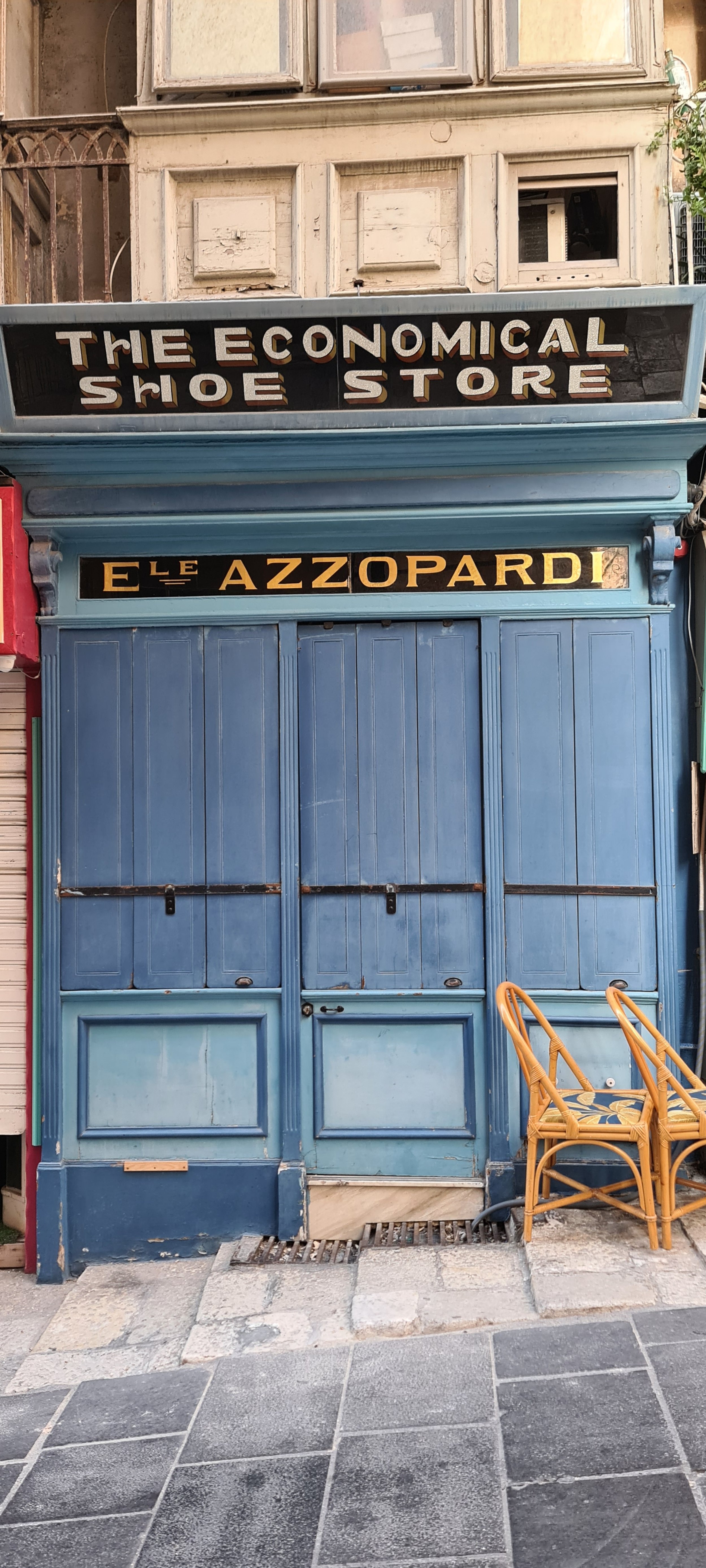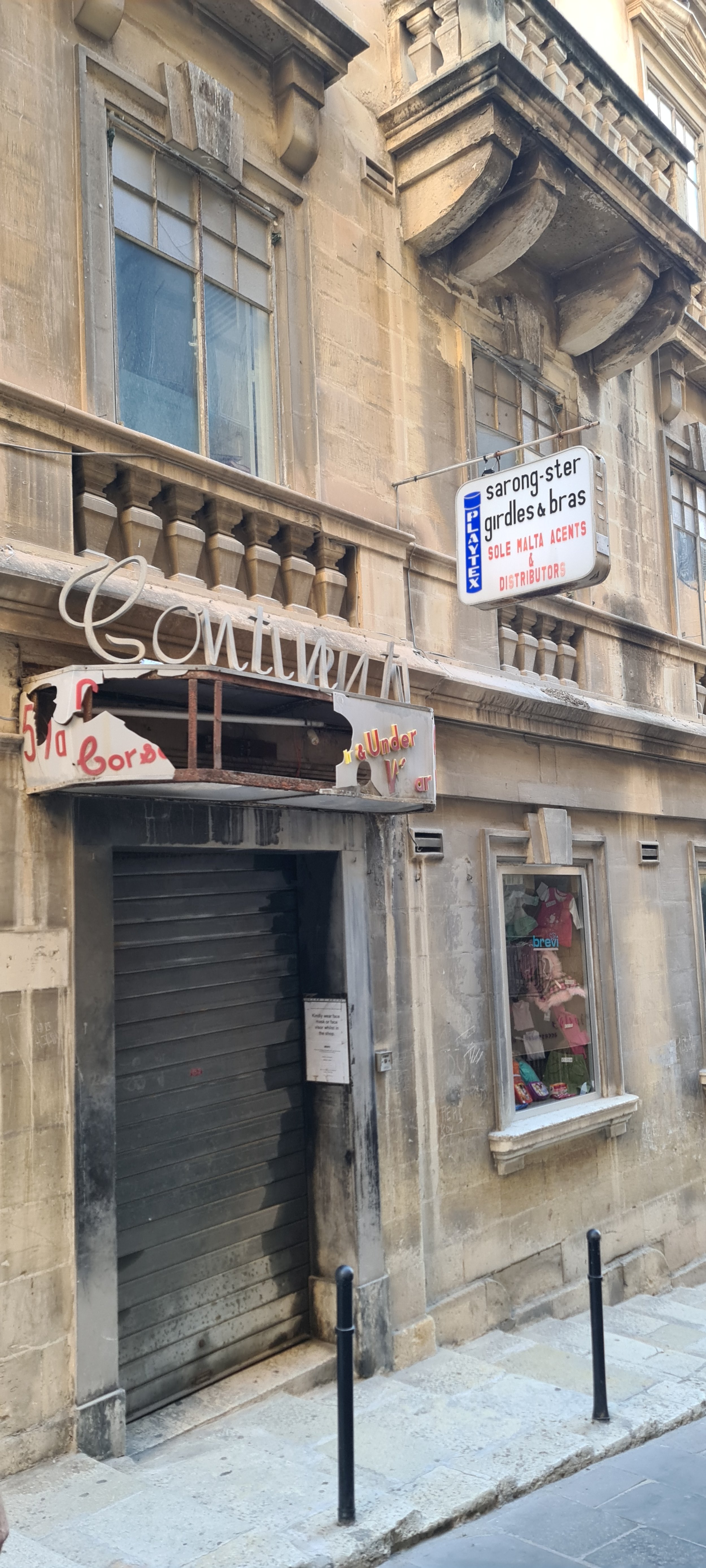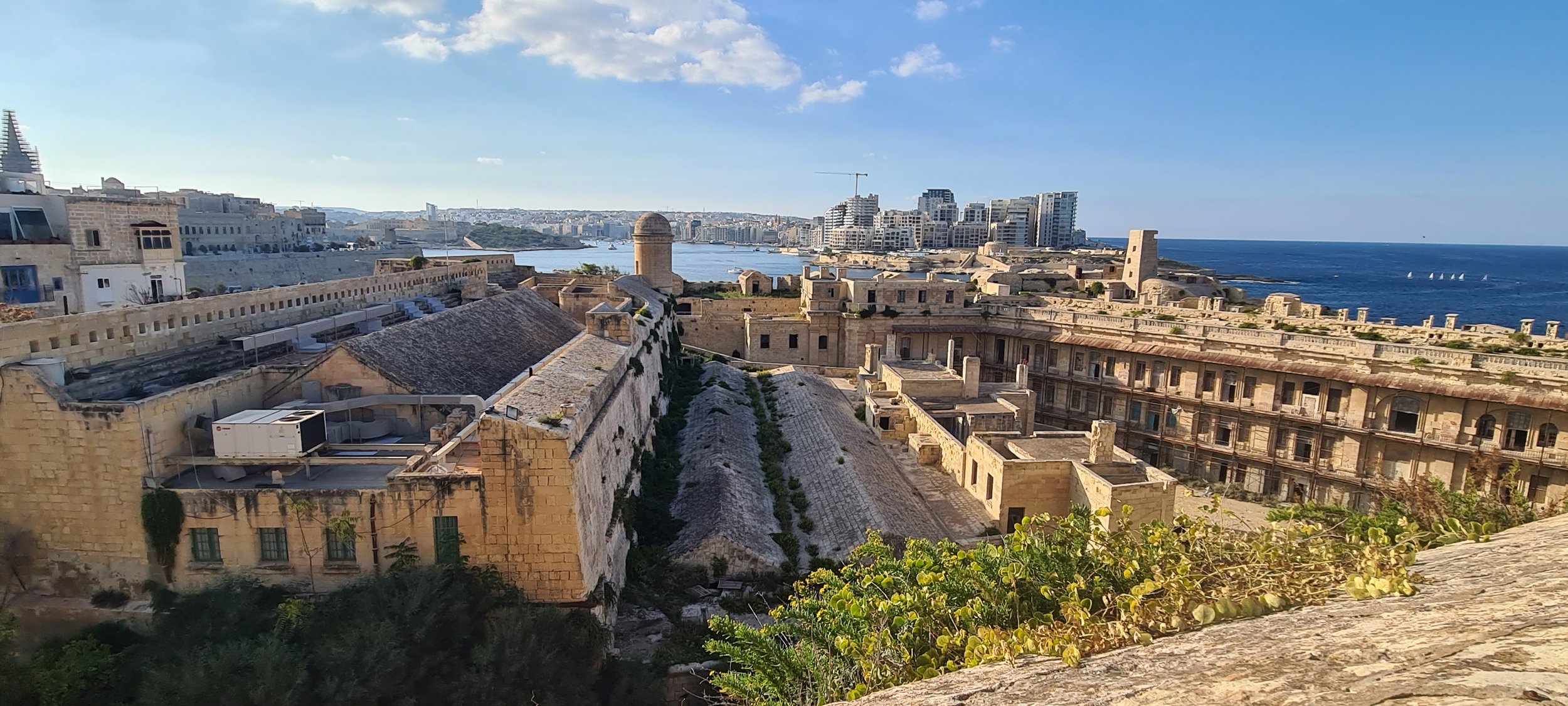Malta & Gozo
Sixty miles southwest of Sicily lies Malta, strategically important for many millennia, lying between Africa and Europe, it is a cultural melting pot of 444,000 people and the local language reflects this, an exotic mix of Arabic, African, English, and French; luckily for us everyone also speaks English. It took us eight hours motor sailing to get down there, arriving in the late Sunday afternoon sun, it was overwhelming – the Grand Harbour, oh so grand – hills of monumental golden sandstone forts, baroque churches, and so many cranes on the skyline (we counted 50+) and then to have a bay just inside the harbour to ourselves for the first night, magic. In fact it appeared it was the only place to anchor in the harbour - the inlet of Id-Daħla ta’ Rinella or Rinella Bay, sandwiched between Fort Ricasoli and the old WWII hospital. And it was noticeably warmer. In the ten days since we had left Montenegro the sea temperature had climbed from 19 to 25 degrees and the air was a balmy 28 - yes liking Malta already.
It wasn’t mandatory to check in with Customs and we spent our first morning tendering around and into the four arms of the harbour with its marinas, chandleries, big ships, big forts, baroque churches, and the old WWII hospital with stone hydrotherapy huts on the shore. In the afternoon we tendered out and around to Marsamxett Harbour, tying up in Lazaretto Creek to visit a barber and start getting our Atlantic satellite communications sorted at Medcomms.
Getting our satcomms sorted was stressful. We had an existing Iridium Go unit from 2018, which we had only used for three months and kept safely in its box. Buying a prepaid SIM at an exorbitant price (it was our only option) it took several days to arrive from the UK, then refused to register on the network. We spent many, many hours troubleshooting with Medcomms and their provider Satcom Global, both helpful but to no avail. When we left Malta it was still not working, so we bought a Garmin InReach GPS 86i as a backup, not as functional as Iridium for our crossing but better than nothing. Kaching.
We stayed in Rinella Bay for five nights, it was quiet, calm, clean and handy for getting an Uber, giving us the opportunity to scrub NOETA’s hull, make water, chat to local pigeon racers, and do a bit of inland touring. But priority one - gas. We use a mixture of gas and power to cook on NOETA, only using the microwave and induction hob when we have enough power, so having a good supply of gas is important and not always easy to get as we had discovered throughout Europe and more recently in Siricusa. It took us a couple of days to find the gas supply on the island, Liquigas, a 15 minute Uber south to the huge container port Marsaxlokk. A 6kg refill was €9, the cheapest we have ever paid and although the return Uber was €36 it was still a lot better than €90 for 3kg!
Inland Mdina, population 300, the ancient hilltop capital with magnificent views of the island to the sea, was established in 800 BC and saw a succession of inhabitants – Phoenicians, Carthaginians, Greeks, Romans, Arabs, and Normans until the Knights arrived in 1530. The Knights built fortifications and a new city at Valetta above the Grand Harbour, and the old “silent city” slowly declined. However the dungeons were still used during the time of the Knights and the small dungeon museum was really awful and really good, very gruesome and historically informative, the Knights actually weren’t all that nice. Mdina sits on the outskirts of a larger town Ir-Rabat, population 11,000 and on the recommendation of our Uber driver Paul bought pastizzi for lunch at Is-Serkin, the pizelli (pea) and ricotta were delicious. Paul also told us that the colour of the old buses denoted the route, he explained this was for people who could not read. On our return journey, we discussed the water problem with Uber driver Francesco, with low rainfall the island depends on desalination and all new buildings are required to have a water storage tank in the basement.
The only downside to our anchorage in Rinella Bay was a very unpleasant smell every now and then, we never discovered where it came from but it smelt a bit like burning rubbish and a rendering plant. So after five days we decamped around the corner to Marsamxett Harbour, where we could fill up with diesel, visit Valetta more easily and finish our chandlering at Gauci Borda and provisioning at Gala (superb supermarket located above a car showroom). Being in the other harbour also gave us the opportunity to admire the many professional looking sailors and sleek lined racing boats, here for the Rolex Middle Sea Race, 606 nautical miles up through the Straits of Messina, anticlockwise around Sicily and then back down again to Malta; the streets and harbour were buzzing.
The fuel barge, a small coastal tanker, was located below St Andrew's Bastions, underneath Great Siege Road, and was open from sunrise to sunset. Tying up was fun - the fuel pipe would only reach to our starboard tank, but we solved it by filling up starboard, then running the transfer pump to the port tank while filling up 15 drums, then filling up starboard again. Diesel 909 L @ €1.25 & €10 service fee, comparatively cheap.
Then it was race day! - organised chaos as we weaved our way through other spectator boats to watch the yachts leaving from the Grand Harbour. There was very little wind, a parade of colourful sails and then they were off up towards Sicily, 300 boats in all.
Saving the best for last – Valetta. We had caught up with a friend of a friend, local Graziella, and some of her friends one night @ Trabuxu in Valetta and had had a taste of what to expect, so on our last afternoon we tendered across and tied up beside the Sliema-Valetta ferry, and spent the afternoon wandering up and down the surprisingly steep streets, narrow old world shop fronts, stunning St John’s co-cathedral with masses of gold and marble and a couple of Caravaggios, then the Fort St Elmo war museum, a superbly curated history of Malta through the ages.
From the Knights, who against all odds, defeated the Turkish Suleiman the Magnificent in the 1500s through Napoleon’s looting in the 1700s, British aid and colonisation in the 1800s, WWII where the Maltese stood strong against the Italians and Germans, who reduced their island to rubble and the inhabitants to near starvation (and for which they were collectively awarded the George Cross), to its independence in 1974 and finally EU membership in 2004; it is a fascinating story and well told. I was particularly impressed with the Cooking for Victory initiative - the Maltese government introduced the concept to boost morale and reduce waste. Both food and fuel were rationed, and the locals were encouraged to donate food from their rations to a communal Victory Kitchen which then cooked meals and distributed back. When the Santa Maria convoy arrived on August 8, 1942, the Maltese people were 100 days away from absolute starvation. Only five of the original 14 merchant ships managed to evade the Axis forces and enter the harbour, but provided enough supplies to keep the starving Maltese population on its feet and survive the war.
But it was time to move on, it was Sunday again so lots of local boats as we headed along the coast to Gozo. We bypassed the very crowded Blue Lagoon on Comino and were delighted with our anchorage in Ramla Bay. Wide red sand beach, clear, warm blue water, green hills and very peaceful. It was quite sad to leave the next morning, would have liked to stay a while longer….




